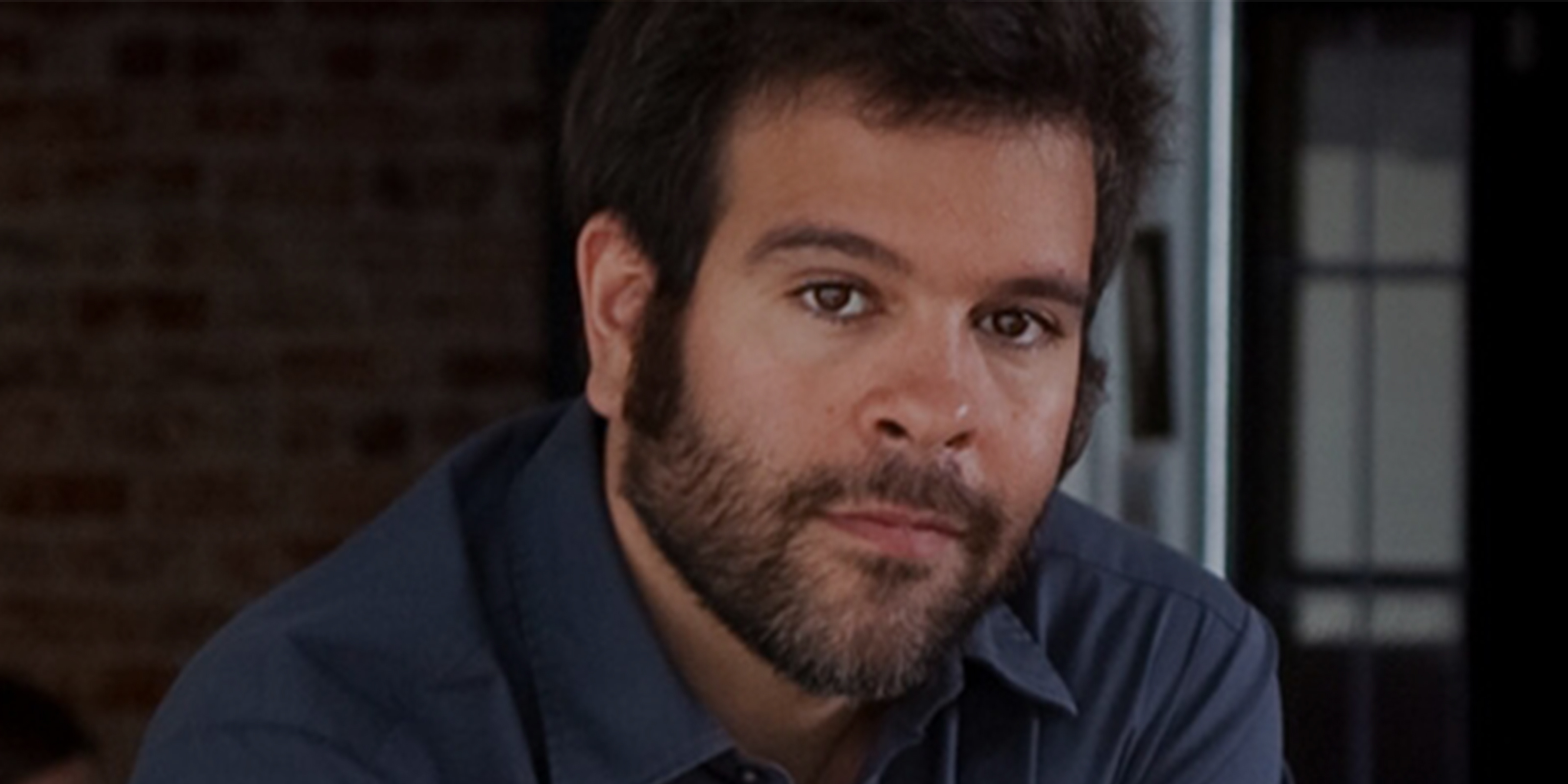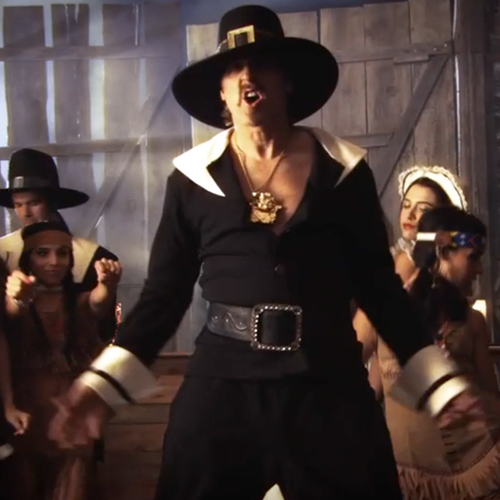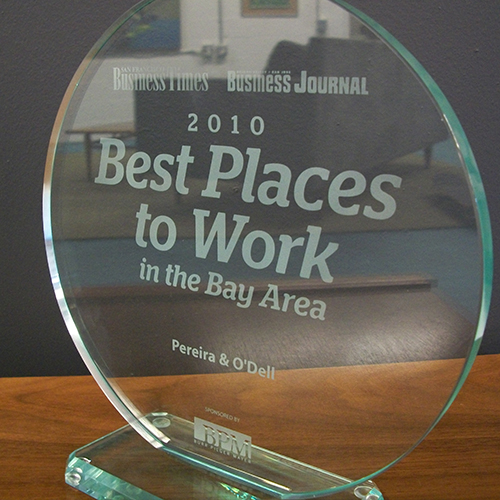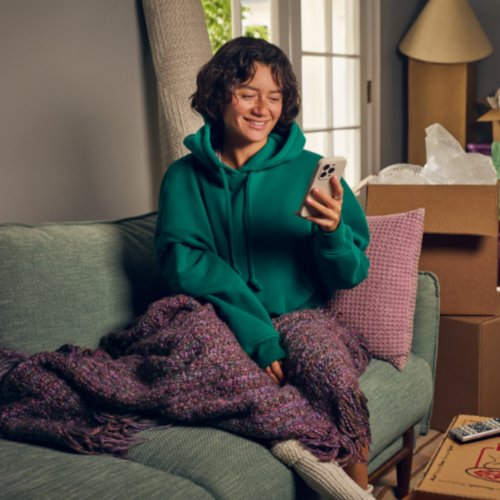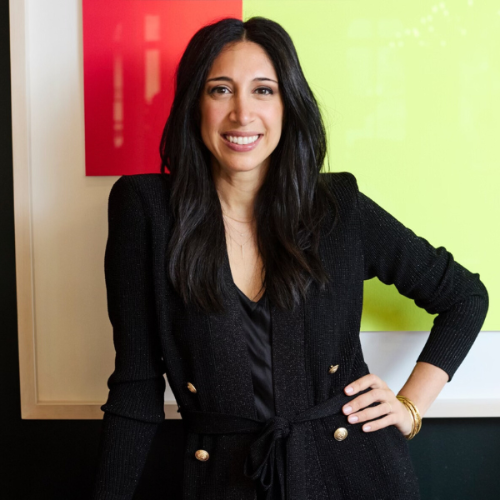PJ Pereira is somewhat of an overachiever. After fulfilling every creative’s career long dream of leaving the day job, starting his own agency and winning a couple of Cannes Grand Prix, he moved on to become the Executive Creative Director at one of the most innovative and fast growing agencies of the last decade. And won some awards things there too. While being a regular on those 40 to watch under 40 lists is somewhat expected of somebody like PJ, he would’ve probably topped the hypothetical 14 under 14 list too, since he started his career as a programmer at the tender age of 13 in Brazil.
And now he’s ready to start it all over again at the helm of his new San Francisco hot shop Pereira O’Dell. In just over a year, the agency’s built a very solid reputation producing work for LEGO, Muscle Milk, Corona and Ubisoft. So how does he do it all then? ihaveanidea puts on its entrepreneurial hat and tries to pick up some valuable lessons from serial agency-starting PJ.
Pereira O’Dell is the second agency you start, the first one being AgenciaClick in Brazil. What happened there exactly?
If you think of my career, the story is kind of like this. My first job in advertising was at DM9 in Brazil – they weren’t DDB at that point . My first assignment was to start a digital practice into the agency. The web was at its early beginning. I convinced them that they needed to invest in that field, and worked there for a couple of years. I ran around the different departments and was finally moved to creative and then given my own department later.
PJ's personal artwork is inspired by the mythology and folklore of African deities. It was right at the time where the Cyber Lions at Cannes were launched and I won two golds two years in a row, so that started to get me some respect, gave my work some visibility, and allowed me to do things my own way, which I really appreciated.
When DDB bought DM9, I was given the chance to open my own agency with my former bosses. They invited me to start it with them, and I think I was born to be my own boss rather than work for someone else so it made sense at the time. I thought that instead of creating my own agency from scratch and being the president, I would prefer to get together with those guys who had experience as entrepreneurs and that we start from that base. That was the birth of AgenciaClick. It started as a 15 person company and when I left four years later it had grown to 300-340 people. I think they’re doing even better now. They’re 500 or so. So they’re doing better without me than they did with me! (laughs) I take a lot of pride in creating creative cultures more than anything. I left AgenciaClick five years ago and they’re still one of the most respected interactive agencies around. They still win a lot of awards, do some really interesting work and get attention from all over the planet. That’s one of my biggest accomplishments; I’ve built something that could live without me.
At that time, the Brazilian market didn’t feel that challenging anymore. I had worked on all the brands and with all the people I wanted to work with. So it was time for me to move on. The next step for me was moving to North America. That’s when a friend of mine who had just gotten a job at AKQA introduced me to Tom (Bedecarre, CEO) and Ajaz (Ahmed, Chairman). I met them, we had a good time and got along very well so I moved to San Francisco to work with them. I stayed there for 3-4 years but at one point my entrepreneurial dreams started to kick back. That’s when I met Andrew, my partner here, who also has a really strong entrepreneurial spirit and history. Around that same time, Agencia Click was sold to Aegis Group who also bought Lot21, Andrew’s old company. So we basically both sold our companies to the same group, and that sparked the “Hey, maybe we should do something together again” conversation. And from a joke it became a reality.
On the next day we were talking to investors who had been knocking on our doors for a long time, and we created Pereira O’Dell.
How hard was it to say “screw my big, fancy job at AKQA, and let’s do our own thing”?
PJ: Andrew (O’Dell) says “this entrepreneurial thing is like a disease”. I didn’t have to do that. I was doing well; I loved the company, loved the people there and was working with great clients. I have absolutely nothing wrong to say about that job. I had no reason whatsoever to leave, but I just had to. More than being a creative, being an entrepreneur is something that’s bigger than me. I wouldn’t be able to do anything else. It was time to be my own boss again.
Some people just freak out. They can’t handle the pressure and the rush of waking up everyday and making the metro ride. You think “I have 300 people working for me, so today, I have to pay the salary for 10 of them. Just today, I have to make sure we have the revenue for 10 of these guys. Tomorrow, it’s gonna be another set of 10”. I don’t have 300 now, but I remember that feeling. Some people love it, others hate it. I am one of those that love it.
A lot of people say that to start an agency you only need a computer and card box desks. You on the other hand decided to go the investors route. First of, would you like to share some tips about how to convince investors to jump in since an agency’s often not viewed as an investment that’ll pay off quickly?
PJ: I had a twelve years old relationship with our investors and had known them for a long time, so it was different. They were my first bosses in advertising and they invited me to create a new agency with them that was extremely successful. When I left, they kept calling me to say “Hey when you decide to do something again, just call us and we’ll talk about it.”. I kept telling them “I’m not ready, I am not ready, I am not ready.” So one day I called and told them “I am ready, are you?” and they were ready to go so we started. So I am not sure I can answer the “how do you convince investors to do something” because they convinced us more than the other way around! (laughs) You’re right that some people start an agency with just a card box and their own ideas. And that’s possible, although you can grow quicker and create a less risky business if you have good investors behind you. And by that I mean people who will put money, let you do your thing and not be on your neck the whole time. We were fortunate enough to have that. That’s one of the good things about having gone to business school instead of a creative school. I understand some issues that sometimes other creatives don’t know exists until they’re in front of them. When you’re a small company, the biggest challenge that you have is cash flow. You need to have money in the bank when it’s time to pay people. It’s not about making a profit at the end of the year, it’s about having enough cash to pay your expenses on a daily basis. And that’s why it’s tremendous to have investors. You can make the decisions you need to make for the business to grow. You can be bold on how you pitch ideas; you can be brave about how you try to push your clients forward. You’re not worried about how you’re gonna pay salaries in two days. You’re just worried about the next two or three years and you can make wiser decisions. You can do well without it, but doing it with good investors that trust you and understand what you’re doing allows you to make long term decisions that will pay much more later. We could have an entire conversation about cash-flow alone, I am sure the creatives will enjoy that a lot! (laughs).
How did you get your first client? That’s always a bit of a contentious question, had you made a deal with them before leaving AKQA or was it a let’s leave, and then find clients kind of situation?
PJ: Let me tell you the real story. The reality is that we didn’t have a single client. Andrew and I are pretty obsessed about doing things the way we think is right. One of Andrew’s main responsibilities at AKQA was new business. And as an Executive Creative Director, it was quite important for me too to keep good relationships with clients. So when we decided that we were going to launch, we had one of those conversations about doing it right. We’re not going to talk about this new agency, what it’s going to be like, who we’re gonna work for. We’re not going to poach clients, we’re not going to talk to possible employees. Basically, we’re not going to do anything for this new agency until our first day out of AKQA. So although we were talking to investors and figuring out the financial part of things. We weren’t having any conversations with clients. On our first day out of AKQA Andrew and I were both at Starbucks using the Wi-Fi cards we got as a farewell gift from our former colleagues and said “Now what?” We looked at each other and realized we didn’t have a plan. We needed to make one, but as the last months had been incredibly stressful for us with all the negotiations, we decided to go back home, take two days off and then regroup and start to work on something.
So we went back home, and I was remodeling my new house at that time and had lots of planning to do. I was dealing with the contractors, my wife, the architects, it was crazy! So the next day Andrew called and said he had good news. We had planned to spend up to two months planning the new agency’s positioning, the story, the name and all that. But the second day out of our jobs we get a call from LEGO saying they wanted to hear our ideas, so we said “Of Course!”. Fortunately we didn’t have too much time to think about the positioning and had to go straight to work.
You left two interactive agencies (AgenciaClick & AKQA) to start an all service one, when all people have been talking about in the last few years is that the future lays in being specialized Doing one thing, and doing it extremely well. Why did you decide to go the all service route?
First, because I think creative companies should do things in different ways and go to where the rest of the crowd is not going. And that’s an important thing, but besides that, one thing that we had in mind when we opened this shop was that advertising has evolved a lot since it was created before Mad Men times. It was a very simple profession. The clients had problems and the agencies would help them solve these problems. As these different agencies grew and created these specialized areas: direct marketing companies, PR companies, below the line and above the line agencies, digital, search marketing, social media shops. When you looked at the work all these overly specialized agencies started to do, you felt it was so fragmented that they became more about their specialty than consumers. What we wanted to do was create a shop that would treat advertising as it should be if it was invented today. We’re not trying to re-invent advertising, don’t get me wrong. We’re just trying to stay away from trends and what’s cool. Because what’s cool today will not be next year, and we don’t want to be caught up on that. So we brought people from design, from interactive, from traditional advertising, from PR and got them all together here without specialized departments or anything. Interesting people, with interesting perspectives trying to solve problems for clients. That’s what advertising should be about.
At AKQA you shared your job with Rei Inamoto (who’s now the Global CD) and Lars Bastholm (now Ogilvy’s Chief Digital Creative Officer), how would you say your jobs are different today?
PJ: We recently had the chance to get together for the first time in years and it’s funny how our jobs couldn’t be more different. Lars is in charge of taking a gigantic company and bringing it to this new world that we’re living in. Making them catch up with what’s happening in the world. Rei is taking a company that’s a great, fast-growing innovator and trying to make it into a global powerhouse. Maybe make it as big as Ogilvy is. And I am just going the other direction. I am creating something that’s really small and with which I am really hands on. I work with small and ambitious clients that are not necessarily about size, but about how far they can go. So it’s totally different. We’re talking about tens of thousands of people with Lars, hundreds of people with Rei, and dozens for me. The fact that we were basically doing the same job for a while but that we’re now in such a different path is mind boggling. We had a lot of fun talking about these things.
When you mingle with these agency heads who are essentially your competitors, are you always cautious about not sharing too many secrets since you may be pitching against these guys next week?
PJ: I don’t think there’s such a thing as a secret in this industry. The secret is having great people and focused on doing great work. The challenge of doing that in a small, mid-sized or big agency is completely different. For a huge company, the scale and internal politics make it hard to have a lot of great people. For a small company the day-by-day survival mode and the fact that you don’t have so many people is what’s difficult. And that’s the challenge that we have here. When you’re right in the middle like AKQA is, the difficulty is do you manage yourself as an Ogilvy or as us? They’re totally different problems and challenges about getting people to do great work. So in the end, although we end up competing and pitching against each other eventually, we’re doing things so differently that we can go there and open our kimonos without harming anyone of us. It makes all of us better.
Are you thinking of following the AKQA path and expanding outside of North America?
PJ: That’s definitely a possibly. I am not locked into any specific mode, I am still incredibly focussed on the work. We’re always open, but we’re not focused on that now.
You decided to put your name on the door of your agency this time, this means you won’t be leaving to start something else when this gets too big and successful right?
PJ: Yeah, that’s kind of the plan. (laughs)


